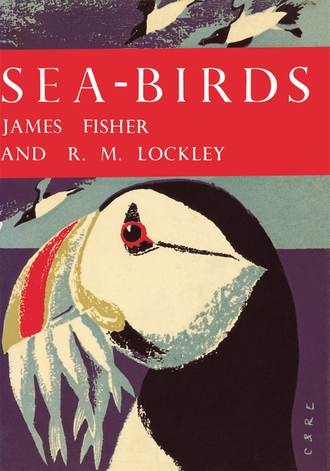
Полная версия
Sea-Birds
There is only one other place at which the great auk has been suspected to have bred; it is certainly the most remote and romantic of the lot—romantic because it is the first place in the New World to have been seen by an European. In 877 a Norwegian, Gunnbjörn Ulfsson, on his way to Iceland to settle, was driven west past Iceland by storms, to some skerries, beyond which was land. The land was the the east coast of Greenland, and the skerries, once thought to be what are known as Graah’s Islands, at about the same latitude as the Snæfell Peninsula of Iceland, and now thought (G. Holm, 1918) to be Leif’s and Erik den Røde’s Islands north-east of Angmagssalik. It was from Snæfellsnes that Erik the Red set sail in 982 to found the first European colony in the New World—and he navigated west to Gunnbjörn’s skerries on his way. In the old sailing directions they are regarded as “midway between ‘Greenland’ (the Norse colonies in S.W. Greenland) and Iceland”; which is correct. Many fishermen and voyagers to Greenland after Gunnbjörn and Erik sailed to, or by, Gunnbjörn’s skerries, and in the twelfth or thirteenth century at least one such voyager, according to the M.S. sagas of Iceland (Anon., 1838, W. Preyer, 1862), discovered a great multitude of great auks on them. Between 1586 and 1596 the fisherman Látra Clemens from Adalsvík in Iceland is said to have taken a ‘boatload’ of garefowls here. There is no later record of great auks at this place,* and it may have become too ice-bound with the deterioration of climate at about that time.
Such is the grim history of the great auk. As Salomonsen (1945) points out, the downfall of the great garefowl probably began when the Indians of the east coast of North America exterminated it on the mainland and neighbouring islands; by the time the hungry sixteenth-century transatlantic sailors found it in the Gulf of St. Lawrence and Newfoundland it was probably already driven to skerries out of reach of the Indians’ canoes. Maybe in prehistoric times the great auk also had a wider breeding-distribution in north-west Europe, or at least a very much denser distribution in Iceland-Faeroe-Britain. At the last, in its final miserable nineteenth-century years of slaughter, it was demanded for collectors (though while it was alive they did not pay much for it, contemporary accounts show). For years its passing was not known, and it was still sought high and low, by Steenstrup, Wolley, Newton, Grieve, Lucas; the devoted interest of these ornithologists only served to show that ornithology came not quite in time to save the auk, and that ignorance and greed are sometimes more powerful than knowledge and truth.
The end of the great auk was the only extinction in historical times of a primary North Atlantic seabird; but a secondary sea-bird, the Labrador duck, followed it in 1875 or 1878. Man the ignorant killer was again the agent of its death, armed this time with a shotgun. The evidence against him, in this particular case, is circumstantial; for nobody knows much about the population of Camptorhynchus labradorius
Конец ознакомительного фрагмента.
Текст предоставлен ООО «ЛитРес».
Прочитайте эту книгу целиком, купив полную легальную версию на ЛитРес.
Безопасно оплатить книгу можно банковской картой Visa, MasterCard, Maestro, со счета мобильного телефона, с платежного терминала, в салоне МТС или Связной, через PayPal, WebMoney, Яндекс.Деньги, QIWI Кошелек, бонусными картами или другим удобным Вам способом.



